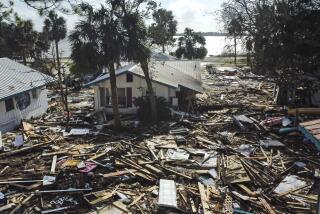500,000 Remain Without Power After Storm
More than 500,000 customers from Arkansas to Delaware were still waiting Monday for utility crews to repair power lines broken by a winter storm, and residents of hard-hit areas of Arkansas may have to go without electricity for 2 1/2 weeks, utility officials said.
In Tennessee, where about 129,000 households and businesses still lacked electricity four days after the storm coated trees and power lines with several inches of ice, a shelter was opened in Nashville for residents without power.
Ron Holmes, a construction worker, said he stuck it out without electricity at home on Friday and Saturday, “but it just got too cold.”
The number of people without power was expected to diminish rapidly as the weather warms up to around 60 for parts of Tennessee and about 40 by the weekend as far north as New York City.
“We should make real good progress today (Monday),” said Cecil Whaley of the state Emergency Management Agency.
The warming brought its own problems in some areas, as water from melting ice caused short circuits and softened the ground supporting utility poles. Weakened tree branches were still falling.
At Milford, Del., where two-thirds of the town’s 6,000 residents were without electricity at one point, crews managed to get power back to all but about 1,500 before melting ice started to knock out power again. Some customers lost service six times, utility company officials said.
Trees broken by the ice littered the landscape. Tennessee had more than 200 people from the forestry department working with 500 National Guard troops on chain-saw crews, Whaley said. He said the crews already had worn out many of the large saws purchased by the state since Friday.
In Mississippi, the problems facing repair crews were not just broken tree limbs and wires. Some of Mississippi Power & Light’s 95-foot-high steel power line towers collapsed under the weight of more than a foot of ice on the cables.
MP&L; engineers estimated that, with three 500-foot cables running between towers, the structures collapsed under as much as 39 tons of ice each.
More to Read
Sign up for Essential California
The most important California stories and recommendations in your inbox every morning.
You may occasionally receive promotional content from the Los Angeles Times.










